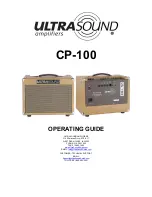
64
,,,,,,,,,,,,,,,,,,
,,,,,,,,,,,,,,,,,,
QQQQQQQQQQQQQQQQQQ
QQQQQQQQQQQQQQQQQQ
¢¢¢¢¢¢¢¢¢¢¢¢¢¢¢¢¢¢
¢¢¢¢¢¢¢¢¢¢¢¢¢¢¢¢¢¢
M
Record the selected part.
...............................................
You can now add new notes to the selected part by playing
the keyboard at the appropriate timing. The default chord for
data entry is C major 7. A different chord can be specified as
required via the
PARA. EDIT
display page, described on page
71. If both the RHY1 and RHY2 parts are deleted the metro-
nome will sound to provide a timing guide (the metronome
sound is not recorded). A single drum instrument can be cleared
from the RHY1 or RHY2 part which is currently set to the REC
mode by pressing the key corresponding to the instrument to be
cleared while holding the
RHY. CLEAR
LCD button.
●
MAIN and FILL Section Rules
Observe the following rules when recording the MAIN and
FILL sections:
• Use only the CM7 (or chord specified by the PARA. EDIT page
parameters) scale notes when recording the BASS and PHRASE parts.
• Use only the chord notes when recording the CHORD and PAD tracks.
• Refer to the “ Source Chord Type List” on page 65 for the scale and
chord notes for each source chord type.
• Any appropriate chord or chord progression can be used for the INTRO
and ENDING sections.
<
Repeat until all parts have been recorded.
.
Continue selecting the REC mode for the various parts in the
PART RECORD
display and recording them as required until
all parts have been recorded.
• Key On/Off, Volume, Pitch Bend and Modulation data,
etc., can be recorded.
• Playback can be started and stopped via the [START/
STOP] button as required while in the STYLE CRE-
ATOR mode — data cannot be recorded while play-
back is stopped. It is a good idea, however, to use
[SYNC START] if you want to record from the top of
the first measure.
• The volume, effects, and other parameters related to
the voice being used can be adjusted via the FADER
or FULL MIXING CONSOLE display R1 part LCD
dials. “- - -” will appear in the value location of param-
eters which are not available.
• A “KEY OFF” event will automatically be recorded at
the end of the loop.
• Try to keep the maximum number of simultaneous
notes below 20. Use the POLY COUNTER function
(UTILITY F8, page 131) to keep track of the total
number of notes being played.
>
Go on to SETUP, EDIT, PARA. EDIT, and
STORE.
................................................................................................
You can now stop the accompaniment by pressing the
[START/STOP] button (or leave it running, as required), and
go on to the
SETUP
display (page 67), the
EDIT
display (page
68) and/or the
PARA. EDIT
display (page 71). When your
custom accompaniment is complete, be sure to use the
STORE
function (page 70), to store the style to one of the CUSTOM
STYLE memory locations.
?
Exit when done.
........................................................................
When your custom accompaniment is stored, press the
[STYLE CREATOR] or [EXIT] button to exit from the STYLE
CREATOR mode.
• It is also possible to create custom styles using an external sequencer,
as described on page 73.
The Custom Style Creator
VOICE
CREATOR
STYLE
CREATOR
FUNCTION
SONG/M.PAD
RECORDING SAMPLING
DISK
OVERALL/UTILITY
SYNC
START
START/
STOP
INTRO A/B
ACCOMPANIMEN
Содержание PortaTone PSR-8000
Страница 1: ......
Страница 206: ...M D G EMI Division 1997 Yamaha Corporation VZ20220 801POCP4 3 03C0 Printed in Japan ...
















































